The Self Portrait of a Cricket Fan
A Game in Memory
 Tunku Varadarajan
Tunku Varadarajan  Tunku Varadarajan
Tunku Varadarajan  | 21 Dec, 2017
| 21 Dec, 2017
/wp-content/uploads/2017/12/Cricket1_3.jpg)
As a small boy in India, my world of cricket was also a world of comforting clichés. Our writers and radio commentators had a stock of phrases to which they resorted with unblushing repetition. Winning teams were ‘felicitated’ and losers scorned with ‘brickbats’. A batsman’s defence was ‘immaculate’; a bowler’s swing was ‘prodigious’, his turn ‘vicious’, and his bounce ‘steep’ (or even ‘steepling’, when the West Indies bowled). Catches in the slips were ‘pouched’, although ‘dollies’ and ‘sitters’ were sometimes dropped. Underperforming players were ‘passengers’, tail-enders were usually ‘rabbits’ (especially India’s), and the fatter fielders—of whom there were always at least four in every Indian eleven— ‘escorted’ the ball to the boundary. The best fieldsmen ‘prowled’ the covers, and the only Indian to merit the verb back then was Tiger Pataudi. So, in the best spirit of those early-year echoes, I propose to take you Down Memory Lane (another phrase beloved of the cricket-uncles of my childhood), offering you a handful of stories that describe my growing up with cricket.
The Oval,1971
Five days short of my ninth birthday, on August 24th, 1971, India became a force in world cricket. I’d been playing in the backyard of our sizeable government bungalow in Lucknow when I heard my father summoning me indoors. There was an urgency in his voice, so I ran in, fearing something unfortunate. Instead, I found Daddy seated by the radio, telling me to sit by his side. “Listen to this,” I think he said, and in the next minutes I heard the words “And India have won,” rasped in an English accent by a commentator at The Oval in London. This was India’s first win in a Test match in England, after a long history of abject poundings. Although I’d played cricket since I was about seven years of age, this was the first time I felt a pang of passion for the Idea of Cricket, and for cricket as a transcendental force in India’s life and culture. I’d paid no attention to India’s equally epochal win over the West Indies just a few months earlier, but I realised this win was special because it seemed to mean so much to my father, who had been 14 when the British left India. He had a bookish Brahmin’s disdain for sports, and this moment of shared ecstasy remained—till his death—the only time we bonded over something sporting as father and son.
Ferozeshah Kotla, 1972
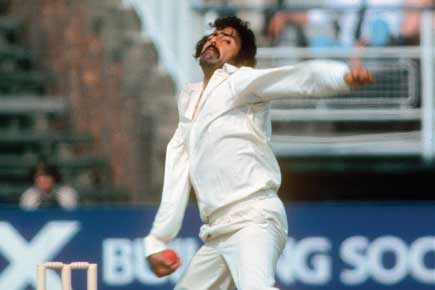 Delhi’s Kotla was a ghastly ground even 45 years ago, but I, a 10-year-old agog to be at his first Test match, paid no heed to anything but the cricket. We’d been sent from Lucknow by our parents to stay with our maternal grandparents, and those were the days when a grandma didn’t think twice about letting two little boys—me and my seven-year-old brother—go to five days of Test cricket all by themselves. We were given money for Gold Spot and ice-cream, and equipped with a tiffin box of jam sandwiches and gun-powdered idlis (all rouged up for lunchtime). The grown-up strangers around us were protective, and took us to the gate where we were to meet our grandfather after the day’s play. There was a staidness about Indian cricket then, which mirrored the staidness of India, and a decency in the crowd—even in Delhi—that is largely absent today. But the crowd could also be intimidating, as I found when BS Chandrasekhar came on to bowl. Chandra was an unpredictable genius who bowled with a right arm that had been withered by polio in his childhood. The crowd roared him on as he ran in to bowl, his first steps long and awkward, the pace of his run then quickening till he delivered the ball in a whipping blur. The batsman faced Chandra, and he also faced the crowd. I was a part of that crowd, my voice a part of its voice.
Delhi’s Kotla was a ghastly ground even 45 years ago, but I, a 10-year-old agog to be at his first Test match, paid no heed to anything but the cricket. We’d been sent from Lucknow by our parents to stay with our maternal grandparents, and those were the days when a grandma didn’t think twice about letting two little boys—me and my seven-year-old brother—go to five days of Test cricket all by themselves. We were given money for Gold Spot and ice-cream, and equipped with a tiffin box of jam sandwiches and gun-powdered idlis (all rouged up for lunchtime). The grown-up strangers around us were protective, and took us to the gate where we were to meet our grandfather after the day’s play. There was a staidness about Indian cricket then, which mirrored the staidness of India, and a decency in the crowd—even in Delhi—that is largely absent today. But the crowd could also be intimidating, as I found when BS Chandrasekhar came on to bowl. Chandra was an unpredictable genius who bowled with a right arm that had been withered by polio in his childhood. The crowd roared him on as he ran in to bowl, his first steps long and awkward, the pace of his run then quickening till he delivered the ball in a whipping blur. The batsman faced Chandra, and he also faced the crowd. I was a part of that crowd, my voice a part of its voice.
Ferozeshah Kotla, 1974
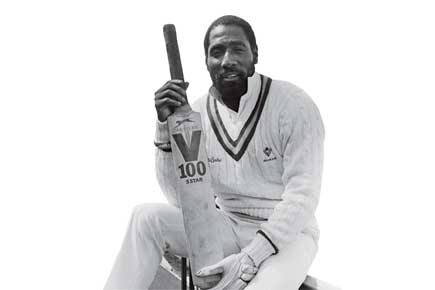 This is an awkward memory, which is why it lives on with me. The West Indians were playing India and I, now 12, had scored a ticket for Day 1 of the Delhi Test through a friend of the family. The trade-off was that I had to accompany a woman in her late twenties who was going to a Test match for the first time. (Her fiancée’s absence on business had freed up a seat for me.) Chivalry dictated that I teach her the nuances of the game, but to my great astonishment, she wasn’t the least bit interested. Instead, she spent an entire day admiring the West Indian cricketers for their physique and athleticism instead of their cricket. This was the first time I’d heard a woman openly admiring a man’s bottom. Twelve is an awkward sexual age for a boy, and I found it disconcerting that someone could introduce sex into cricket. I was made doubly uncomfortable by the fact that she was extremely beautiful herself: I glanced at her furtively throughout the day even as she ogled Viv Richards, a swaggering figure of a man. I began to notice how unmanly the Indian team was, by comparison, and told her so. This made her laugh approvingly, her teeth a startling white when she threw her head back.
This is an awkward memory, which is why it lives on with me. The West Indians were playing India and I, now 12, had scored a ticket for Day 1 of the Delhi Test through a friend of the family. The trade-off was that I had to accompany a woman in her late twenties who was going to a Test match for the first time. (Her fiancée’s absence on business had freed up a seat for me.) Chivalry dictated that I teach her the nuances of the game, but to my great astonishment, she wasn’t the least bit interested. Instead, she spent an entire day admiring the West Indian cricketers for their physique and athleticism instead of their cricket. This was the first time I’d heard a woman openly admiring a man’s bottom. Twelve is an awkward sexual age for a boy, and I found it disconcerting that someone could introduce sex into cricket. I was made doubly uncomfortable by the fact that she was extremely beautiful herself: I glanced at her furtively throughout the day even as she ogled Viv Richards, a swaggering figure of a man. I began to notice how unmanly the Indian team was, by comparison, and told her so. This made her laugh approvingly, her teeth a startling white when she threw her head back.
Faisalabad,1978
This was the first Test match to be broadcast live in India from abroad, and also the first India-Pakistan game since 1961 (so doubly epic). By a feat of persuasion with few equals in the annals of teenage bullshit, I persuaded my parents not only to buy a TV set for the household, but also to let me skip school for the first day’s play. It is just possible that I may have lied about attendance at school not being mandatory that week, and if so, what ensued could only have been divine retribution. No more than half an hour into the game, the TV set—made in an India where commercial shoddiness was the norm—burst into flames. The cook ran in from the kitchen to douse it with a potful of water, and that was the end of the day’s play for me. Fortunately, a like- minded classmate had an uncle with a television, and so the rest of the Test was spent in a stranger’s home (on our best behaviour). My friends were all (as I was) well-placed bureaucrats’ children: IAS, IFS, that sort of thing; but no one had a TV. Our homes were comfortable and centrally located, and our fathers had drivers and great social status; yet we lacked the material advantages that the children of businessmen had. We had contempt for the lalas, but they had the TV sets.
The Oval,1979
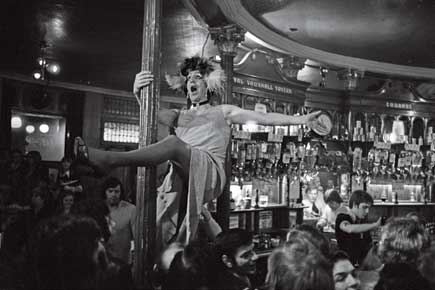 I was 16, and had moved to London, and I’d just spent a day watching Sunil Gavaskar score a double-century of great beauty and guts. In the exhilaration of it all, I’d had more pints than I should have done as England conjured a draw out of a likely Indian win. Deflated, I was at the ground’s bar by myself for a last hoist of ale when a middle-aged Englishman offered to buy me a drink “to celebrate Gavaskar”. He was, he said, a retired schoolmaster. I was fresh off the boat, so when he suggested that we go for another drink to the Vauxhall Tavern—just down the road from The Oval—I saw no harm in it. I had just about enough money left for a Tube ride home, so the prospect of a courtesy pint was most welcome. At the Tavern, it dawned on me that I was entering a world for which I was unprepared. There was a drag queen performing on stage, and there were men everywhere, just men, obviously homosexual. I panicked, then flared up with resentment at an older man’s attempt to pick me up. The squalor (as I saw it) of his enterprise was in such contrast to the nobility of Gavaskar’s effort just an hour ago, that I practically shouted at him in indignation. He gripped my hand as if to detain me—or, perhaps, to reason with me—but I dashed out into the open light and ran down the street till I could run no more.
I was 16, and had moved to London, and I’d just spent a day watching Sunil Gavaskar score a double-century of great beauty and guts. In the exhilaration of it all, I’d had more pints than I should have done as England conjured a draw out of a likely Indian win. Deflated, I was at the ground’s bar by myself for a last hoist of ale when a middle-aged Englishman offered to buy me a drink “to celebrate Gavaskar”. He was, he said, a retired schoolmaster. I was fresh off the boat, so when he suggested that we go for another drink to the Vauxhall Tavern—just down the road from The Oval—I saw no harm in it. I had just about enough money left for a Tube ride home, so the prospect of a courtesy pint was most welcome. At the Tavern, it dawned on me that I was entering a world for which I was unprepared. There was a drag queen performing on stage, and there were men everywhere, just men, obviously homosexual. I panicked, then flared up with resentment at an older man’s attempt to pick me up. The squalor (as I saw it) of his enterprise was in such contrast to the nobility of Gavaskar’s effort just an hour ago, that I practically shouted at him in indignation. He gripped my hand as if to detain me—or, perhaps, to reason with me—but I dashed out into the open light and ran down the street till I could run no more.
Lord’s, World Cup Final, 1983
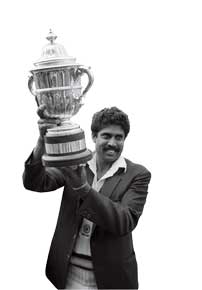 I was at the home of cricket the day the Indian team performed a feat so unlikely that its members are still in a daze about it. You only have to hear them babble at commemorative celebrations decades later to understand that no one—least of all the players themselves—expected India to defeat the West Indies. My brother and I had come by tickets through the Indian High Commission, where my father worked, and we sat in the popular stands in the midst of a full-throated throng of Jamaicans. Observing their mood change from strutting arrogance to abject bewilderment was a lesson in the perils of hubris. We Indian fans were tottering too much from the improbability of the result to notice anything but the smiles of our companions and the voices of our friends. Later, when the Indian team appeared on the balcony, there was a joyous mayhem in which even the West Indians took part. We walked halfway across London after the game before finally finding our wits, and our way home. I kept the match-ticket in my wallet for another 10 years; one day, it fluttered into fragments. It had never occurred to me to frame it.
I was at the home of cricket the day the Indian team performed a feat so unlikely that its members are still in a daze about it. You only have to hear them babble at commemorative celebrations decades later to understand that no one—least of all the players themselves—expected India to defeat the West Indies. My brother and I had come by tickets through the Indian High Commission, where my father worked, and we sat in the popular stands in the midst of a full-throated throng of Jamaicans. Observing their mood change from strutting arrogance to abject bewilderment was a lesson in the perils of hubris. We Indian fans were tottering too much from the improbability of the result to notice anything but the smiles of our companions and the voices of our friends. Later, when the Indian team appeared on the balcony, there was a joyous mayhem in which even the West Indians took part. We walked halfway across London after the game before finally finding our wits, and our way home. I kept the match-ticket in my wallet for another 10 years; one day, it fluttered into fragments. It had never occurred to me to frame it.
Lord’s, 1994
This is a memory that gives me particular (and pungent) pleasure. It involves a Test match, but my link to it was not as spectator but as arbiter. I was now 32, and working as a leader (editorial) writer at The Times of London. My editor, Peter Stothard, was a cultured man who knew more about Ancient Greece than Modern Cricket; so, when England’s captain Michael Atherton was caught on camera rubbing dirt from his pocket on to the ball, and all hell broke loose in Britannia, Stothard asked me to write the disapproving editorial. Ball-tampering was, at the time, cricket’s equivalent of infanticide, so I kicked hard at Atherton from some very high moral ground: ‘In a disconcerting sequence of events, without precedent in the history of the game, the captain of the England cricket team stands accused of cheating.’ I wrote of cricket’s role ‘as a medium for the expression of national character’, and said that ‘the game’s followers—and, by extension, a much wider swath of English society—have reason to feel betrayed’. The editorial called on Atherton to step down. Atherton did not, of course, but I still think he should have resigned. Remarkably, he is now The Times’ cricket correspondent.
Ferozeshah Kotla, 2017
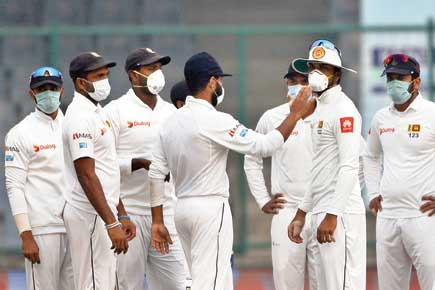 Not a memory, this, but a matter of living shame. It will come to be a bitter memory in time. I include it here to illustrate what the people who run cricket in India are doing to my precious game. On the 4th of December, 2017, I attended the Delhi Test match played against the Sri Lankans, and what followed would have brought tears to my eyes if the Delhi smog hadn’t done so already. Our national guests—fine, courteous, athletes from a friendly neighbouring country—were compelled to play in conditions that no professional sporting team should have to endure. Why was a Test match allocated to Delhi in the first place, when everyone was aware that the city’s air is so poisonous that schoolchildren are sometimes kept at home? The day I attended, conditions were so bad that my head began to ache within half an hour of my taking my seat, even as my eyes steamed and my throat barked out loud. The Lankans wore smog masks while fielding, and the ugly photographs of their doing so should be nailed forever to the BCCI’s wall of infamy. Cricket in India is a game played for passionate fans by passionate players. It is also a game run by men who specialise in tarnishing a beautiful game.
Not a memory, this, but a matter of living shame. It will come to be a bitter memory in time. I include it here to illustrate what the people who run cricket in India are doing to my precious game. On the 4th of December, 2017, I attended the Delhi Test match played against the Sri Lankans, and what followed would have brought tears to my eyes if the Delhi smog hadn’t done so already. Our national guests—fine, courteous, athletes from a friendly neighbouring country—were compelled to play in conditions that no professional sporting team should have to endure. Why was a Test match allocated to Delhi in the first place, when everyone was aware that the city’s air is so poisonous that schoolchildren are sometimes kept at home? The day I attended, conditions were so bad that my head began to ache within half an hour of my taking my seat, even as my eyes steamed and my throat barked out loud. The Lankans wore smog masks while fielding, and the ugly photographs of their doing so should be nailed forever to the BCCI’s wall of infamy. Cricket in India is a game played for passionate fans by passionate players. It is also a game run by men who specialise in tarnishing a beautiful game.

/wp-content/uploads/2024/11/Cover-ModiFaith.jpg)



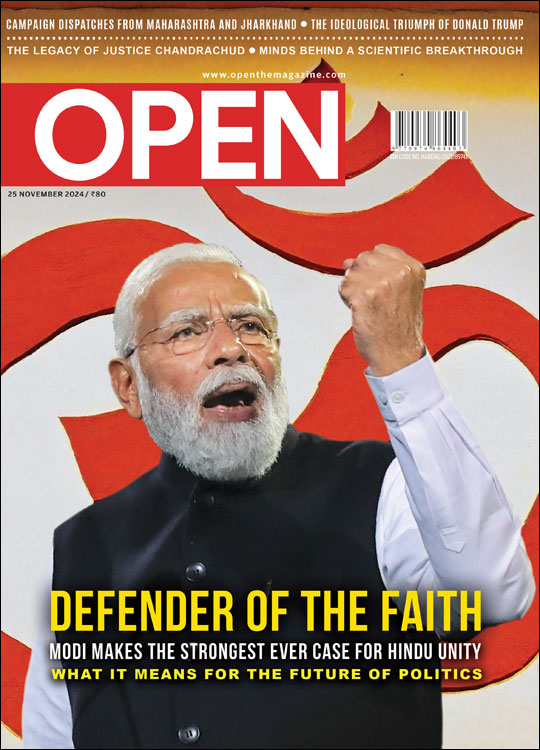



/wp-content/uploads/2017/12/Serialkiller1.jpg)
/wp-content/uploads/2017/12/Colour1.jpg)
/wp-content/uploads/2017/12/Salmanrushdie_1.jpg)

More Columns
Madan Mohan’s Legacy Kaveree Bamzai
Cult Movies Meet Cool Tech Kaveree Bamzai
Memories of a Fall Nandini Nair